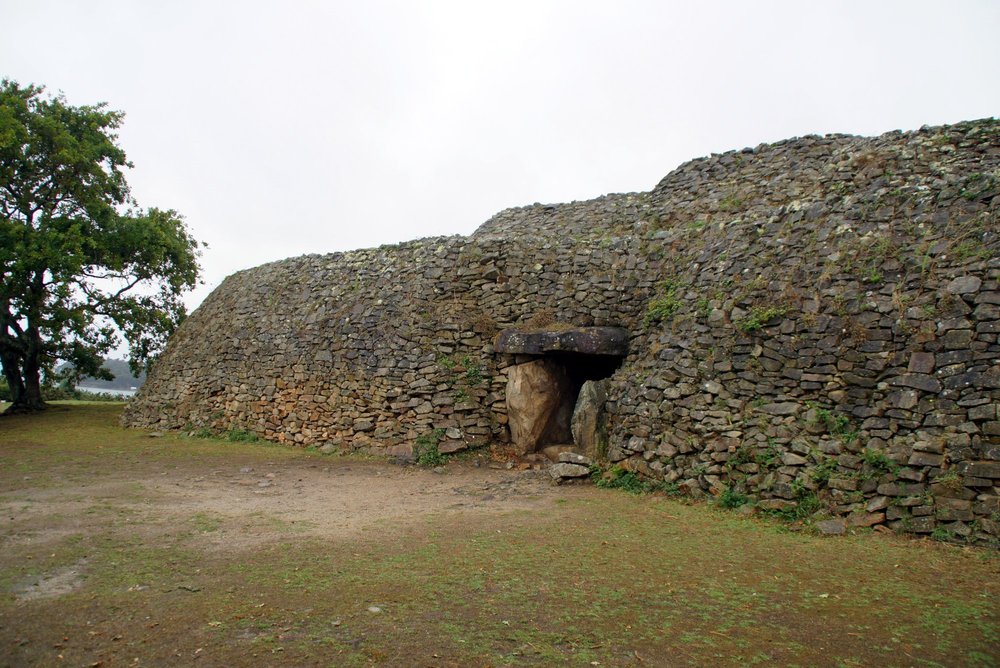France
Megaliths of Carnac
The Megaliths of Carnac and of the Shores of Morbihan display a high density of megalithic structures of Neolithic origin.
Spread across four components along the coast of Brittany, the monuments date back to ca. 5000 - 2300 BCE. They include menhirs, stone circles, grave monuments and other stone structures. Some stones are engraved with pictographs. Their scale and diversity testify to the ingenuity of these Neolithic communities.
Community Perspective: Hubert has given a good overview of which parts are interesting to visit. They are hardly accessible on public transport.
Site Info
Official Information
- Full Name
- Megaliths of Carnac and of the Shores of Morbihan (ID: 1725)
- Country
- France
- Status
-
Inscribed 2025
Site history
History of Megaliths of Carnac
- 2025: Inscribed
- Meets criterion 1 and 4
- 1996: Added to Tentative List
- Added to tentative list
- 1996: Revision
- Renomination of former TWHS Alignments of Carnac (1980-1984)
- WHS Type
- Cultural
- Criteria
- i
- iv
Links
- UNESCO
- whc.unesco.org
All Links
UNESCO.org
- whc.unesco.org — whc.unesco.org
Related Resources
- bbc.com — The mystery of the Alignements de Carnac
- megalithes-morbihan.com — Candidature website
Community Information
- Community Category
- Archaeological site: Prehistoric
Travel Information
Recent Connections
-
Underwater Archaeology
"Part of the nominated property is curr… -
Early Archaeology
"Scientific archaeological excavations … -
Archaeological potential
"While new structures keep being found,…
Connections of Megaliths of Carnac
- Geography
-
-
Atlantic Ocean
"The monumental stone structures of different types (...) testify to the occupation of the European Atlantic Coast by societies that developed a complex relationship to their natural environment." The boundaries of the core zone border the Atlantic Ocean. (AB Ev) -
Estuary
Component part 3: Three rivers confluence is "[c]entred on the estuary at the mouth of rivers Auray, Vannes and Noyalo, whose valleys are today largely submerged (...)." (AB Ev)
-
- History
-
-
Bronze Age
"(...) monuments were often reused, or new funerary structures inserted into the older ones. New forms of tombs developed in the Bronze Age." (AB Ev) -
Megalithism
"The nominated serial property consists of four component parts which encompass a high density of megalithic structures showcasing Neolithic monumental architecture (...)." (AB Ev) -
Neolithic age
"The nominated serial property consists of four component parts which encompass a high density of megalithic structures showcasing Neolithic monumental architecture which was erected successively over more than two millennia (from approximately 5000 to 2300 BCE) (...)." - "The megalithic phenomenon in Brittany ceased with the end of the Neolithic period." (AB Ev)
-
- Damaged
-
-
Damaged in World War II
"The Second World War left a particular mark on the nominated property due to the construction of the Atlantic Wall, which had a major impact on some of the structures, in particular for the Er Gadoueric dolmen in Erdeven and the dolmen at the pointe Men er Bellec in Saint-Philibert (both in the buffer zone), as well as the cairn of Petit Mont in Arzon (component part 3)." (AB Ev)
-
- World Heritage Process
-
-
Reconstruction regarded as unsatisfactory
"Some restoration interventions from the 1980s are today considered inappropriate or do not allow to differentiate between the original material and the reconstruction (as in the cairn of Gavrinis, Table-des-Marchands dolmen and cairn of Petit Mont, in component part 3)." (AB Ev)
-
- Religion and Belief
-
-
Legends and Folk Myths
"In the Middle Ages, myths and folk tales emerged around megaliths (...)." (AB Ev)
-
- Human Activity
-
-
Petroglyphs
"A rich repertoire of parietal art engraved on stone slabs complemented this megalithic architecture." - "Some 158 engraved stones with a variety of representations of real objects, animals, as well as abstract forms have been documented in the nominated property. Besides their decorative purpose, the engravings were possibly part of a symbolic iconographic system. The engraved tomb walls are largely the result of earlier engraved standing stones being reused in the later funerary constructions." (AB Ev)
-
- Constructions
-
-
Cycoliths (Stone circles)
"A variety of monumental stone structures, such as menhirs, standing stone (or stelae) alignments, stone circles, cairns, and tombs of different types covered by tumuli or simple mounds, were constructed in specific locations, in relation to the topographical features and the spatial and visual interconnections between the megaliths themselves." (AB Ev) -
Tumuli
"A variety of monumental stone structures, such as menhirs, standing stone (or stelae) alignments, stone circles, cairns, and tombs of different types covered by tumuli or simple mounds, were constructed in specific locations, in relation to the topographical features and the spatial and visual interconnections between the megaliths themselves." (AB Ev) -
Stelae
"A variety of monumental stone structures, such as menhirs, standing stone (or stelae) alignments, stone circles, cairns, and tombs of different types covered by tumuli or simple mounds, were constructed in specific locations, in relation to the topographical features and the spatial and visual interconnections between the megaliths themselves." - "Revived partly in the Iron Age, megalithism of that period features specifically Gallic stelae." (AB Ev)
-
- Timeline
-
-
Built in the 5th millennium BC
"(...) this serial property composed of four component parts comprises a high density of megalithic structures that showcase Neolithic monumental architecture erected successively over more than two millennia (from approximately 5000 to 2300 BCE)" (AB Ev)
-
- Science and Technology
-
-
Early Archaeology
"Scientific archaeological excavations of the megalithic sites have been undertaken since the second half of the 19th century and continue to this day." (AB Ev) -
Underwater Archaeology
"Part of the nominated property is currently submerged and thus within the maritime public domain." (AB Ev) -
Archaeological potential
"While new structures keep being found, many of the identified sites have never been excavated." - "The boundaries correspond to the full extent of the known megalithic phenomenon in the region, including areas that might carry future archaeological potential (...)." - "The boundaries correspond to the full extent of the known megalithic phenomenon in the region, including areas that might carry future archaeological potential (...)." (AB Ev)
-
News
No news.
Recent Visitors
Visitors of Megaliths of Carnac
- Adrian
- alex
- alicemears
- Ali Zingstra
- Ammon Watkins
- Antonio J.
- Argo
- Aspasia
- BaziFettehenne
- Bin
- Brett Baumann
- Christine
- Christoph
- ClaireWhiteley
- Cluckily
- Clyde
- Coppi
- Dani Cyr
- Daniela Hohmann
- Daniel Chazad
- Daniel R-F
- Delphine Delaunay
- Dwight Zehuan Xiao
- Ecritures
- Elia Vettorato
- Els Slots
- Fan Yibo
- Farinelli
- Femke Roos
- Francky D'Hoop
- Geert Luiken
- Gianmarco
- Gilles
- Glubu
- Grzegorz Andruszkiewicz
- Hadrianus
- Hasco
- hegeline@icloud.com
- Hubert
- Ivan Rucek
- Jan-Willem
- Jarek Pokrzywnicki
- Jasam
- Jeezas
- jonathanfr
- Juropa
- Lucio
- Mahuhe
- Mars51
- Martina Rúčková
- Matejicek
- MAURO PODDA PANI
- MaxHeAnouBen
- MH
- Michiel Dekker
- nan
- Nasebaer
- Pascal Cauliez
- Patrik
- Philipp Leu
- Philipp Peterer
- Pincze
- Ralf Regele
- RobRos
- Roger Ourset
- Roman Bruehwiler
- Roman Koeln
- SirLoydd
- Solivagant
- Stefan A. Michelfeit
- Szucs Tamas
- Thibault Magnien
- Thomas Kunz
- Truls Brekke
- Tsunami
- Vanessa Buechler
- Viaje al Patrimonio
- VLabhard
- V&M
- voyager
- Walter
- Wojciech Fedoruk
- Zizmondka
- Zoë Sheng
Community Reviews
Show full reviews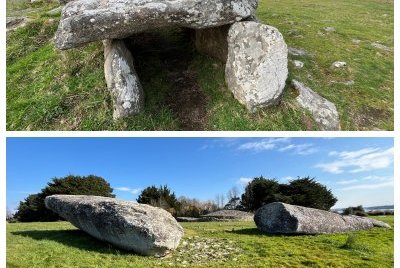
The 2025 WHC will probably bring us the inscription of number 31 on our Missing List: Carnac. Carnac is on the T List as ‘Megalithic Sites of Carnac’, but the nomination has been renamed ‘Carnac and Shores of the Morbihan megaliths’. It has been put forward as a Cultural landscape and comprises four components with thousands of standing stones and tombs.
Carnac is a representative of the European megalithic tradition since the Neolithic, which also includes the Megalithic Temples of Malta and multiple sites in the UK and Ireland, such as Stonehenge and Brú na Bóinne. While at other subjects we’ve now ended up at very niche Tier 3 sites, Carnac undoubtedly is at Tier 1 among its peers. The nominated area covers 19,598 ha, about 4x as large as Stonehenge/Avebury and 6x the sites in Malta. Its oldest parts significantly predate Stonehenge and overlap with the earliest timelines of Newgrange and Ħaġar Qim.
I started my visit at the Carnac Alignments component. Winter is a good time to visit as you’re allowed on the trail amidst the stones by yourself and there will be much less visitors overall. Entrance to the Alignments is also free from October-March. I was lucky with the weather in early March: sunny, blue skies. I parked at the Ménec alignments and then continued on foot. Nothing can prepare you for the first sight of the endless rows of neatly arranged standing stones. I walked most of the ‘Alignments trail’ that connects Ménec …
Keep reading 0 comments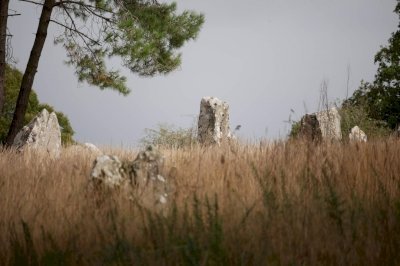
For those who have been privy to participate in one of our meetups or are members of our whatsapp group, the term "Rock art" is synonymous with our dear community member Samuel. I always wondered where his infatuation with rock art came from. For me (and I would argue this is a majority opinion) rock art is rarely if ever endearing. Mostly, rock art shows how much mankind has evolved and how humble our beginnings were.
Well, if I had grown up at one of the truly great rock art sites, I may have a different opinion. Samuel is from Bretagne in the vicinity of Carnac. He must have spent quite a few school trips in the stone fields around Carnac studying the standing stones (menhirs). And it's hard not to fall in love with the place when you do.
In the morning, I had come from Nantes. After a short, unmemorable stop at the museum in Carnac, I set out to hike around the site. I must have misread the scale on the map they had given me, as what was intended to be a one, maybe two hour hike turned into a lengthy hike into the countryside. But with all the great fields of menhirs, it was hard to say stop, so I continued.
The most amazing part to me was just how huge the place is. Even a single field would warrant inscription and it's field upon field upon field... Amazing!
…
Keep reading 0 comments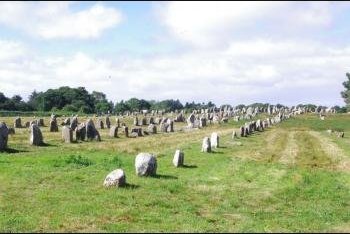
To me, Carnac is the most important “missing WHS” for France. The site bears a unique testimony of the Neolithic period and possesses a tremendous variety of remains. It is definitely a must-see. The different museums in the area allow to better understand the site.
Keep reading 0 comments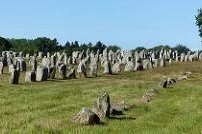
I visited this tentative WHS in July 2016. It definitely deserves inscription as it is one of the best worldwide examples of menhirs, dolmens, tumuli, alignments and megalithic engravings in a relatively compact area. From June to August this site is certainly not off the beaten track and busloads of people visit every day. Due to the fact that most visit during this period, the main alignment fences are closed and one can only enter with a guided visit organised by the Maison des Megalithes (open 10:00 to 19:00) costing 6 euros. If you read up and prepare beforehand or simply if you miss the tour in English, I would suggest visiting before the crowds arrive at 10am and entering the minor free access sites. The surrounding fences are very low and do not obstruct the view of the alignments. I arrived by car at the Maison des Megalithes at around 9am and parked my car for free at the empty parking lot. I had previously downloaded the very good commentary from http://www.brittanytourism.com/discover-our-destinations/southern-brittany-morbihan-gulf/unmissable-sites/carnac and before arriving I bought some food to have breakfast while visiting the alignments. Firstly off I went and walked round the Menec alignments just opposite the parking lot. There are more than 1000 monoliths here, neatly aligned, and incredibly still coexist with a few houses which are inside the fenced off area! The largest monolith here is around 3.5 metres high and is believed to predate the Menec alignments. There are some monoliths which are either …
Keep reading 0 comments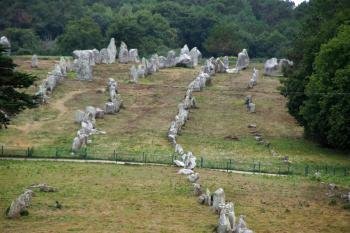
The first time that I saw pictures of the Carnac stones was in a textbook at school and I was instantly fascinated by these enigmatic alignments. Many years later, when I came across the World Heritage list, I was surprised that Carnac was not included. It is on the French tentative list since 1996, but no efforts have been made to submit the site for final decision. So I was pleasantly surprised to find a recently launched website by the association Paysages de Mégalithes. The association aims to protect and promote the megalithic sites in Carnac and Southern Morbihan. The description on the website reads: "Site protection and promotion work is designed to lead to a project to promote all of the heritage in the 26 municipalities in Southern Morbihan included in the research programmes, followed by an application to be listed as Unesco World Heritage."
The website provides descriptions of about 30 of the more than 500 megalithic sites that are scattered across the region: dolmen, tumuli, menhirs, stone circles and alignments. But it is not mentioned which sites will be included in the final nomination, and also the sparse text of the T-list entry gives no detailed information. Probably it is not yet decided.
The Carnac alignments are undoubtedly the most spectacular megalithic sites in Morbihan. The complex consists of three groups of alignments: Ménec, Kermario and Kerlescan (from west to east). In total, there are about 3000 standing stones at a length of …
Keep reading 0 comments
